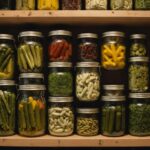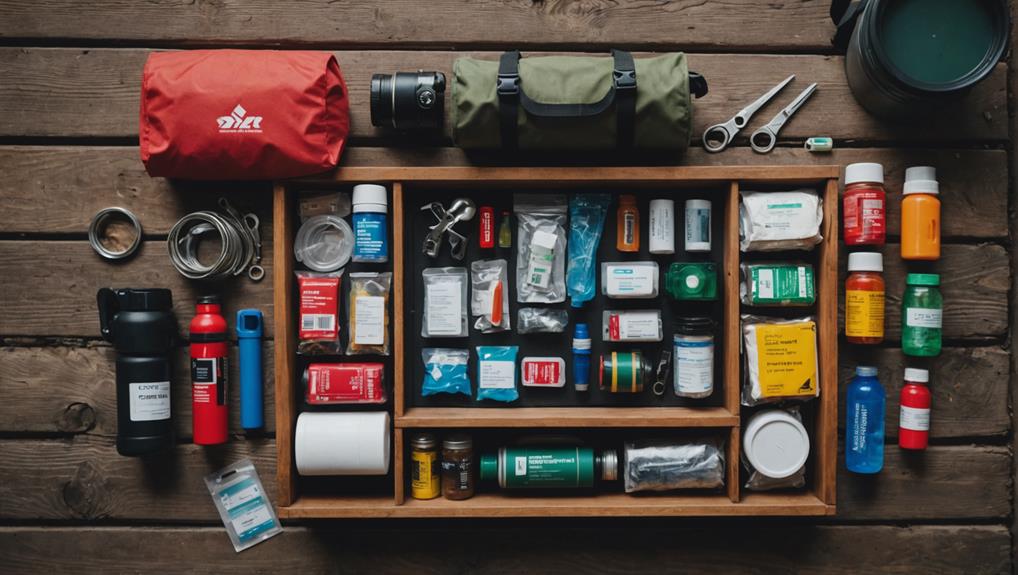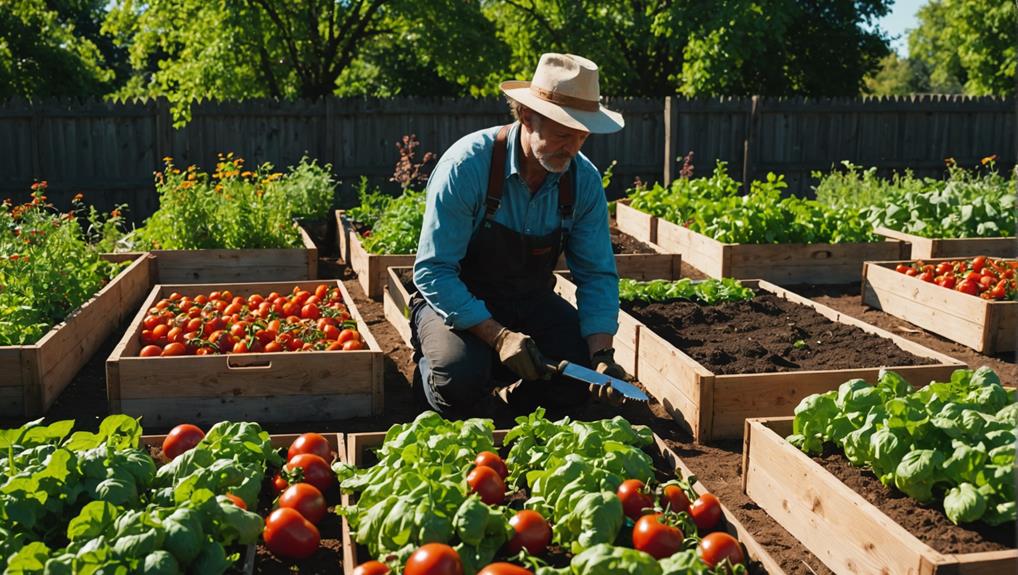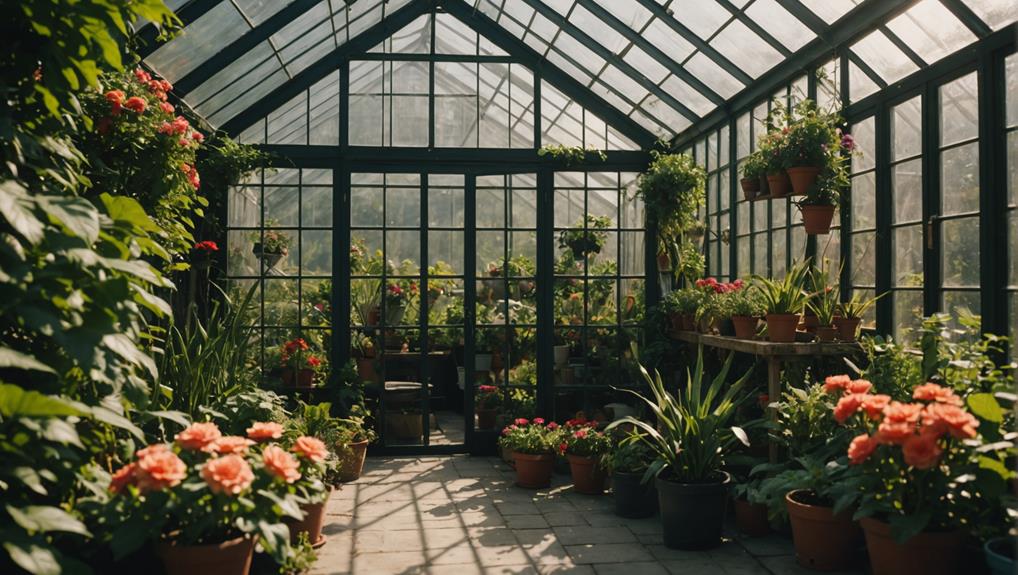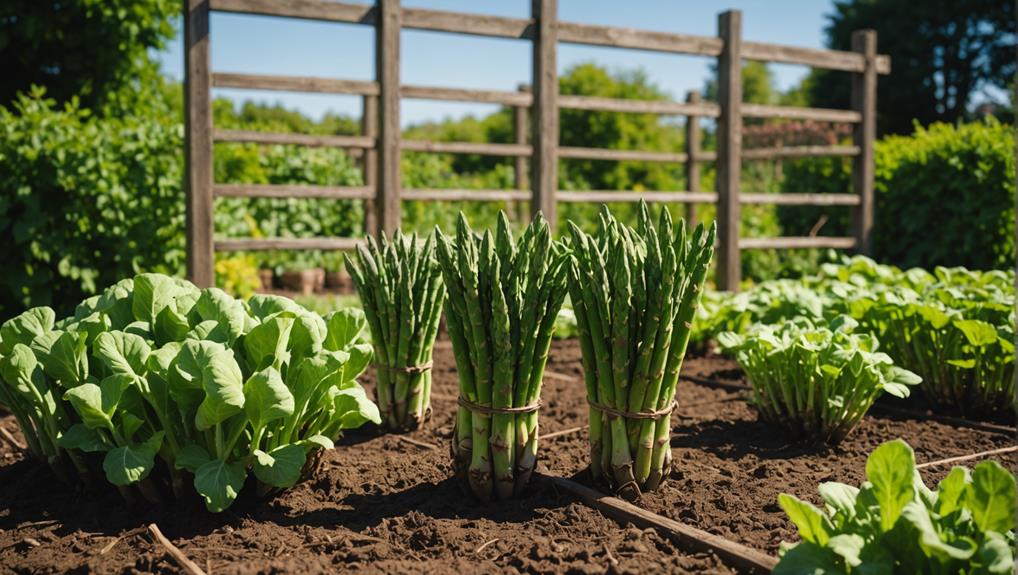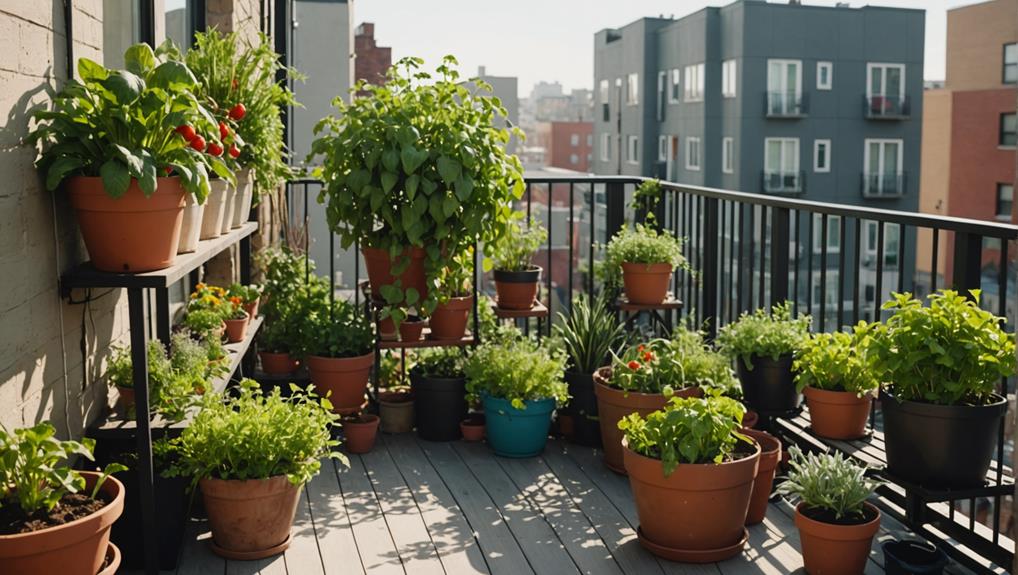As an Amazon Associate I earn from qualifying purchases.
When it comes to prepping, your survival kit should include essential items to guarantee you're ready for anything. Start with at least one gallon of water per person per day, plus non-perishable food for three days. A reliable first-aid kit, communication tools like a portable radio, and sturdy flashlights with extra batteries are also essential. Don't forget multi-utility tools, hygiene supplies, and shelter items like tents and blankets. Fire-starting equipment is critical, too. Each of these components boosts your safety and self-reliance, setting you up for success. There's much more to reflect on, so stick around for further insights.
Importance of Emergency Preparedness
Emergency preparedness is essential because it equips you to handle disruptions from disasters, ensuring you and your loved ones are ready when the unexpected strikes. By taking the initiative to prepare, you're embracing self-reliance, a fundamental aspect of freedom. A well-stocked survival kit is important; it provides immediate support during emergencies when local supplies may vanish quickly.
Think about your food storage and water storage—both are critical components for long-term survival. Stock up on non-perishable food items and enough water to sustain your family for several days. This proactive approach minimizes your dependency on external resources, granting you peace of mind.
Additionally, don't overlook first aid supplies. Having basic medical supplies can make all the difference in a crisis. When you prepare for various scenarios, you not only protect yourself and your family but also cultivate a sense of readiness for whatever life throws your way.
In a world where disruptions are inevitable, embracing emergency preparedness allows you to face challenges head-on, ensuring you maintain control over your environment and safeguard your freedom.
Short-Term Planning Strategies
When planning for short-term emergencies, it's vital to gather essential supplies and assess local hazards. You need to create a well-stocked emergency kit and identify any risks specific to your area. By taking these steps, you'll be better prepared to face unexpected challenges.
Emergency Kit Essentials
A well-stocked emergency kit is crucial for guaranteeing you and your family can survive the first 72 hours of a crisis. Start with water—store at least one gallon per person per day. You'll also need non-perishable food items, enough to last a minimum of three days per family member. Think energy bars, canned goods, and dried fruits; they're compact and easy to prepare.
Don't overlook critical supplies for your emergency kit. A thorough first-aid kit is essential for addressing medical needs, while a portable radio with alternative power sources keeps you informed during a blackout. Include water purification methods to guarantee you can access clean drinking water if needed.
Regularly rotate your food supplies to avoid spoilage and guarantee everything's fresh. Store your emergency kit in easily accessible locations at home and in your vehicle, so you can grab it quickly during unforeseen events.
Local Hazard Assessment
Conducting a local hazard assessment helps you identify the specific risks your area faces, allowing you to tailor your preparedness strategies effectively. Start by pinpointing common natural disasters, like floods or hurricanes. Check your home for vulnerabilities, such as nearby trees that could fall or areas prone to flooding. This knowledge helps you mitigate risks and stay safe.
Next, engage with local emergency management resources. They can provide essential information about evacuation routes, community emergency plans, and available shelters. Knowing these routes and shelters can keep you alive during a disaster.
Create a family emergency plan that includes communication methods, meeting places, and assigned roles for each family member. Make sure everyone knows the plan and feels confident in their responsibilities. This coordination is critical when chaos strikes.
Don't forget to visit your local store to stock up on essential supplies based on your assessment. Regularly review and update your hazard assessment to adapt to any changes in your environment or emerging threats. Staying informed and prepared is your best strategy for maintaining freedom and safety in uncertain times.
Essential Items for Survival Kits
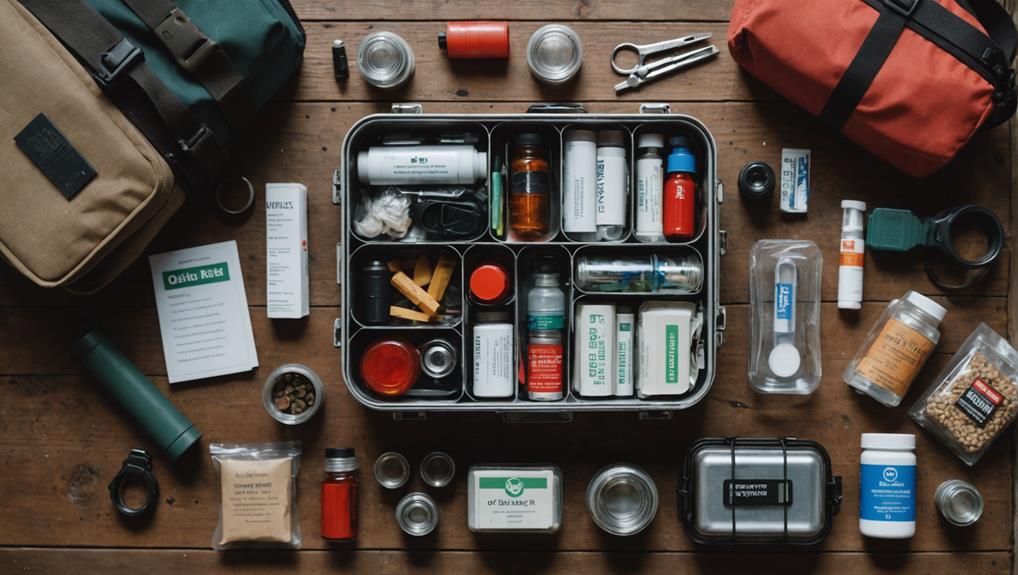
Including essential items in your survival kit can make all the difference in an emergency situation. To guarantee you're prepared, here's a breakdown of must-have items:
| Item | Purpose |
|---|---|
| Water (1 gallon per person per day) | Hydration for a minimum of 3 days |
| Non-perishable food | Sustenance, aiming for at least 1,500 calories per day |
| First-aid kit | Treatment for injuries and emergencies |
You'll want to pack enough food and water to last at least three days. Include a thorough first-aid kit with supplies like gauze and antiseptics to handle injuries. Don't forget water filters or purification tablets to make sure your drinking water is safe.
Flashlights, along with extra batteries, are vital for visibility in low-light situations. Whether it's maneuvering through debris or signaling for help, they're indispensable. A multi-tool knife adds versatility, allowing you to tackle various tasks, from opening cans to making repairs.
Food, Water, and Hygiene Supplies
Packing food, water, and hygiene supplies is essential for safeguarding your survival and well-being during an emergency. Aim for a minimum of three days' worth of food per person, focusing on non-perishables like nuts, canned vegetables, and military meals. These items have a long shelf life, keeping you nourished when it matters most.
Water is equally important—each person needs at least one gallon a day. That means packing a total of three gallons for three days. Don't forget effective purification methods, like iodine crystals and pump filters, to guarantee your drinking water is safe.
Hygiene supplies are crucial for preventing illness. You'll need essentials like toilet paper, soap, and sanitary products. Families typically use over 30 rolls of toilet paper each month, so stock up! Also, think about personal health—extra eyeglasses and prescription medications should be part of your hygiene supplies. This helps make sure you're prepared for any medical help you might need.
Navigation and Communication Tools
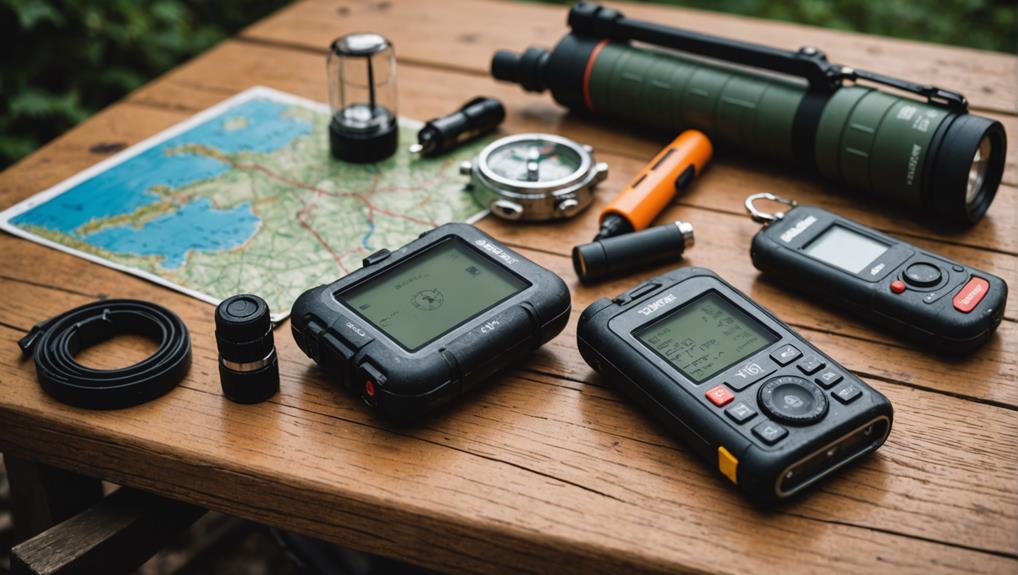
When steering through unfamiliar terrain during an emergency, having reliable tools like a map and compass can make all the difference in finding your way safely. These tools allow for navigation without relying on electronic devices, which may fail when you need them most.
Here are three essential items to include in your survival kit for effective navigation and communication:
- Map and Compass: These timeless tools provide a reliable means to navigate without technology.
- Portable Radio: A two-way radio or NOAA weather radio keeps you updated on emergency services and weather alerts, ensuring you're informed and can make better decisions.
- Whistle: This compact device can signal for help effectively; its sound carries much further than your voice, increasing your chances of being heard.
Don't forget to pack spare batteries for your flashlights and communication devices. They're vital for maintaining functionality during prolonged emergencies when power sources vanish. Keeping a record of important contact numbers can facilitate communication with emergency services, helping you coordinate effectively. Stay prepared, and you'll embrace the freedom to navigate challenging situations with confidence.
Survival Gear Essentials
When you're choosing survival gear, focus on durability and multi-utility features. You want items that can handle tough conditions and serve more than one purpose in emergencies. By prioritizing these aspects, you'll be better prepared for unexpected challenges.
Durable Gear Selection
Choosing durable survival gear is important, as it guarantees your equipment can handle the rigors of repeated use during emergencies without letting you down. You want gear that won't fail when you need it most. With a proper durable gear selection, you can feel much better prepared for any situation. Here are three must-have items to include in your survival kit:
- Water Filter: Clean drinking water is essential. A reliable water filter makes certain you can access safe water in any environment.
- Multi-tool: This compact tool serves multiple purposes and can replace several items in your everyday carry. It's practical, versatile, and a lifesaver in tight spots.
- Fire Starter: Reliable fire starters are important for warmth, cooking, and signaling for help. Make sure you know how to use it efficiently.
Multi-Utility Features
Multi-utility features in survival gear allow you to tackle a variety of tasks with fewer items, maximizing your efficiency and readiness in emergencies. By incorporating these versatile tools into your survival kits, you'll find that compactness becomes a significant advantage. Instead of lugging around a bulky toolkit, you can carry a multitool knife that functions as a knife, screwdriver, and can opener, all in one durable piece of equipment.
Portable water purifiers epitomize this concept, often filtering water while also attaching to different containers for added convenience. This adaptability not only saves space but empowers you with the means to address multiple survival scenarios effectively. When selecting gear, prioritize items that are both durable and affordable; high-quality multi-utility tools are built to withstand harsh conditions, ensuring reliability when it matters most.
Embracing multi-utility features fosters a mindset of preparedness, allowing you to be ready for whatever challenges come your way. With the right gear, you can confidently navigate emergencies without being weighed down by unnecessary items. So gear up, simplify your load, and embrace the freedom of being well-prepared!
Shelter and Protection Options
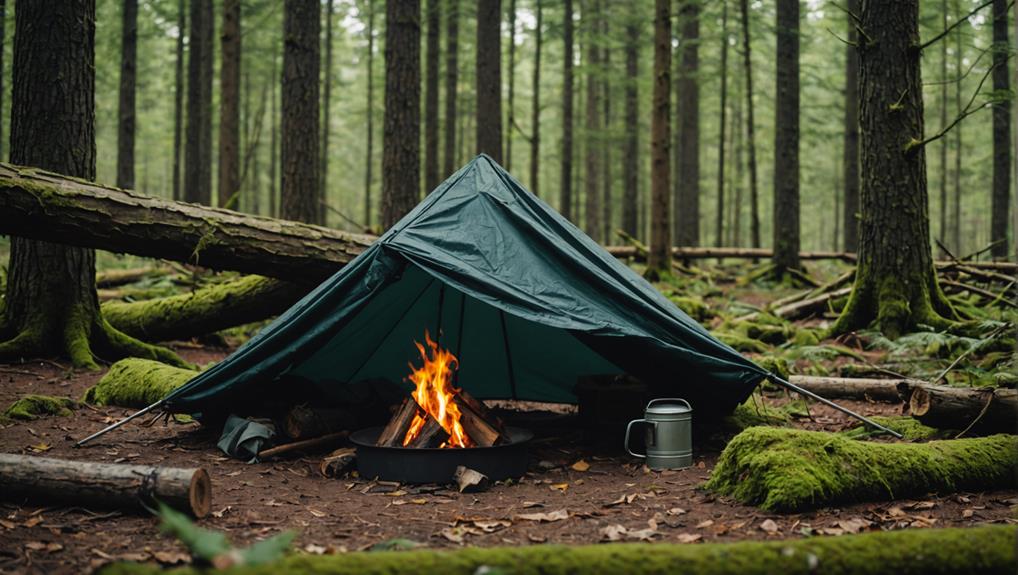
Effective shelter and protection options are essential for survival in adverse conditions, ensuring safety and comfort when facing the elements. Whether you're caught in a storm or dealing with a power outage, having the right gear can make all the difference.
Here are three must-have items for your survival kit:
- Tent: A sturdy tent provides reliable shelter against wind, rain, and snow. It's your first line of defense when the weather turns harsh.
- Blankets: Opt for wool or pile blankets instead of cotton, as they retain warmth even when wet. These blankets will keep you cozy and insulated during cold nights.
- Heavy-Duty Garbage Bags: These versatile bags serve multiple purposes—use them for waste management or as makeshift shelters. Their adaptability can be a game-changer in emergency situations.
Additionally, consider a basic security system to protect your shelter from intruders. By prepping with these essential items, you enhance your chances of staying safe and comfortable in any situation. Remember, freedom comes from being prepared!
Preparing for Water Needs
When preparing for emergencies, ensuring you have an adequate water supply is essential for your survival and well-being. Each person needs at least 1 gallon of water per day, so aim for a minimum of 3 gallons per person in your survival kit. To extend the shelf life of stored water, pack water purification tablets, like iodine crystals, which effectively kill viruses and can save your life.
For a more robust solution, consider the Big Berkey Water Filtration System. It's excellent for purifying rainwater and removing contaminants from stored water sources, ensuring your water remains safe to drink. When storing, use durable containers, such as 55-gallon barrels, which provide long-term accessibility and reliability during crises.
Don't forget to regularly inspect and rotate your stored water supplies to maintain freshness. Stagnant water can harbor bacteria and other harmful pathogens, compromising your health when you need it most. By taking these steps, you'll secure a crucial resource that empowers your freedom and resilience in any situation.
Frequently Asked Questions
What Are the 10 Essential Survival Kit Items?
When considering essential survival kit items, you'll need survival gear like water purification methods, non-perishable food storage, an extensive first aid kit, emergency tools, and reliable shelter options to guarantee your safety and freedom.
What Is the #1 Survival Must Have?
The #1 survival must-have is a survival mindset. You'll thrive with emergency preparedness, wilderness skills, first aid knowledge, and self-defense strategies, ensuring you're ready for anything. Long-term planning keeps your freedom secure in challenging times.
What Are the Basic Needs to Include in Our Survival Kit?
When assembling your survival kit, include essentials like water purification methods, emergency shelter, a first aid kit, reliable food storage, signaling devices, and multi-tool essentials. These items guarantee your safety and freedom in any crisis.
What Are 4 Things Every Emergency Kit Should Have?
Every emergency kit should include a first aid kit, water purification supplies, emergency food, a multi-tool, a fire starter, and signaling devices. These essentials guarantee your safety and self-sufficiency in tough situations. Stay prepared!
Conclusion
In summary, being prepared for emergencies is essential, and having a well-stocked survival kit can make all the difference. By gathering essential items like food, water, and navigation tools, you're equipping yourself for unexpected challenges. Don't forget about shelter and hygiene supplies, too! Take the time now to put together your kit, so you'll feel confident and ready when it matters most. Remember, it's better to be safe than sorry—start prepping today!
As an Amazon Associate I earn from qualifying purchases.





